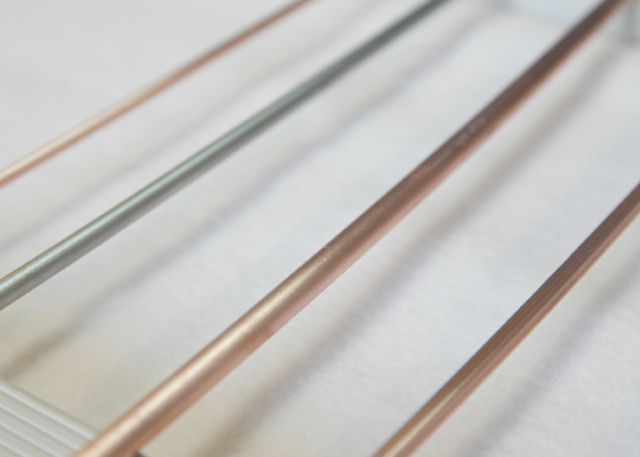AML reimagines magnet technology for electric propulsion
The aerospace industry is seeing rapid changes in aircraft design, applications, propulsion, and performance requirements. If eVTOLs are to reach their full potential and meet the requirements of customers and regulators, they must achieve very high levels of performance and reliability.

Magnets drive electric motors. Today, there are many companies looking to innovate in electric propulsion, and Melbourne, Florida-based Advanced Magnet Lab, Inc. (AML) believes its approach is ideally suited to the sector.
Speaking to eVTOL.com, Mark Senti, AML CEO and co-founder, explained: “For the most part, there’s no two vehicles alike in their design and propulsion requirements. That’s where we come in. We have very advanced and proprietary electrical machine optimization software and motor magnet technologies. If an eVTOL developer comes to us and says, ‘we need a motor with certain power or efficiency and fit in a certain volume,’ we run that into our software.”
Dr. Philippe Masson, AML’s chief technology officer, said, “We perform an extensive ‘design space exploration’ looking at thousands, sometimes tens of thousands, of possible design solutions. We work closely with the customer on those trade-offs between efficiency, weight, size, etc., then we come up with the optimum solution.”
Senti said AML is developing propulsion motors for undisclosed customers in aerospace, including the eVTOL arena, and is developing relationships with both “big players” and start-ups in the broader e-mobility sector to explore how they can optimize their motor performance using AML’s design capabilities and magnet technologies.
A major breakthrough for the company is PM-Wire, which it describes as “a novel approach to the manufacturing of permanent magnets.” Permanent magnets are required for the manufacturing of rotors used in electric motors and generators.
PM-Wire enables unique geometries and optimum magnetization direction, which AML says significantly improves the motor performance at a lower cost than conventional individual magnets. This is called PM-360 and can be applied as a “plug and play” replacement for existing motors or to open new design options for new motor developments.
Masson explained, “In a given magnet you have a given amount of magnetization available. You want to use as much of that as possible in the right direction and configuration, and you’d like to do that without adding iron.”
Senti pointed out that a large typical motor may have 100 or more small magnets. These individual piece-parts of powerful magnets are assembled through a difficult, dangerous, and laborious process.
“Imagine replacing that with one single magnet that’s not in a segmented north-south configuration [but] is in a ‘better than Halbach array’ arrangement,” he explained. “We’re providing an optimum solution versus taking off-the-shelf pieces and putting it together.”
Compared to a conventional magnetic pole configuration, where a significant portion of the magnetic field is unusable without adding heavy iron, AML’s PM-360 directs most of the magnets’ available magnetization to be fully utilized in the end-product without iron.
This, the company says, “offers unprecedented power density, and more, that cannot be matched,” as well as cost-effectiveness.
This ability to design and manufacture products with significantly greater performance and cost savings is “a game-changer for aircraft developers that are facing challenging electric propulsion requirements,” according to AML.
The company says performance improvements range from 10% for a “plug and play” installation to 30% if a design change is applied to a stator and over 50% for new designs. There is also less vibration, and containment of centrifugal forces in high-RPM machines.
Masson added that the technology “will also enable magnetic gearboxes having less weight and a very low cost equivalent to a conventional gearbox.”
He said a key strength of AML is that customers can “truly optimize the design of a propulsion motor.”
In early 2020, AML plans to complete phase two of the development of PM-360 magnets. “Because of the way we produce these magnets, the utilization of the magnet powder is going to be better. Our process guarantees optimum densification and we don’t require a bonding agent for some of these materials,” Senti explained.
He said, “Large companies have told us [that] successful completion of phase two will provide the potential to achieve better performance with even the lower grade [cost] materials.”
Senti pointed out that AML’s products are designed to be “agnostic to the application,” and that the company is also targeting other applications such as propulsion motors for drones, large aircraft, electrical vehicles, and consumer power tools.
He said, “We work with everything from Silicon Valley start-ups to Global 2000 companies. Our route to the market is basically like Intel; we may not be a motor manufacturer, but we want our magnets inside propulsion motors.”
He believes a total cost and performance benefit of PM-360 associated with a U.S.-based raw material production “will eliminate the need and the dependency from China,” where 90% of permanent magnets are manufactured.
“As a company we have established global relationships for the full supply chain of Rare Earth materials and processing needed as the powdered feedstock for magnet manufacturing,” which “allow us the economics for people to buy in Australia, the U.S. and other places competitively,” Senti said.
“We’re not competing at the piece-part level, we’re providing a low-cost, completed assembly. I can say in all honesty, the biggest companies in the world are coming to us,” he added.
Ultimately, increasing power density — that is, optimizing the ratio of the motors’ power to weight and cost — is the only way to make eVTOLs commercially viable, Senti emphasized.
Source: Vertical Magazine
Link: https://verticalmag.com/features/aml-reimagines-magnet-technology-evtol/
